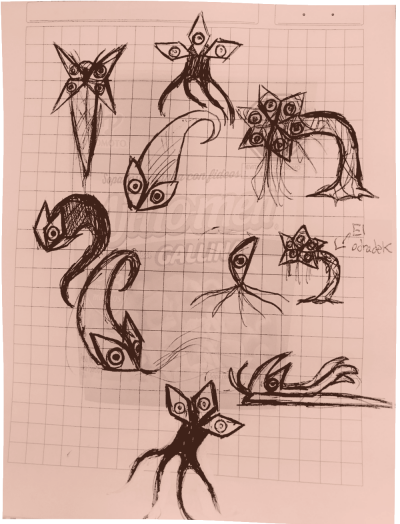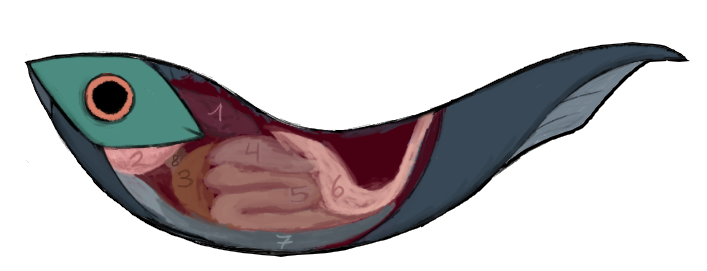Facades
(Facadechthyes)
 Facades is a relatively successful and diverse class of invertebrates, characterized by the plates of hardened tissue located on the front of the creature, where the eyes and other sensory organs are located. The number of plates and eyes varies depending on the family, genus or species. There are some with only one plate and others with more than 6. However, in most facades they usually range from 2 to 4. Most facades have only one eye on each plate but there are specific genus where they usually have two or three eyes on the largest plates. Plates almost always have bright colors.
Facades is a relatively successful and diverse class of invertebrates, characterized by the plates of hardened tissue located on the front of the creature, where the eyes and other sensory organs are located. The number of plates and eyes varies depending on the family, genus or species. There are some with only one plate and others with more than 6. However, in most facades they usually range from 2 to 4. Most facades have only one eye on each plate but there are specific genus where they usually have two or three eyes on the largest plates. Plates almost always have bright colors.
There is a wide variety of facades, from aquatic to terrestrial. Although like many organisms this species originates in water and a large amount of them are acuatic or semiacuatic. All species of facades have spinneret glands usually located between the plates, which allows them to produce silk. Aquatic species use this silk to catch small organisms that get caught in the multiple threads they release when hunting, while terrestrial species cover their entire body with this silk to protect their sensitive and moist skin from dryness. The diet of a facade varies depending of the species.
Clasification
coming soon
Anatomy

The major internal organs common to most facade fish species. (1) Heart, (2) gills, (3) liver, (4) stomach, (5) intestine, (6) gonads, (7) swim bladder, (8) esophagus.
Behaviour
coming soon
Diet
The diet of the facades is varied, most feeding on smaller fleshy organisms, especially the aquatic ones that are characterized by hunting small organisms such as semi-aquatic nagas and other species of facades. Terrestrial and semi-aquatic ones are more omnivorous, complementing their diet more with algae, leaves, fruits and other foods of plant origin. More info coming soon
Reproduction
Facades reproduce sexually and in almost all species the sexes are separated. Male and female can usually be distinguished according to the plates.
Reproduction varies, however in aquatic species there is a drastic difference from terrestrial species, since most of them have external fertilization. During the mating season the female deposits gelatinous eggs on different surfaces such as submerged roots, rocks or suspended in immobile water columns, depending on the species, and fertilization occurs when the male releases the sperm on the eggs.
On the other hand, in totally terrestrial species and most of the semi-aquatic ones, internal fertilization is required, that is, both individuals need to join structures that vary among species, some possessing phallic members in males to insert into females. The vast majority are ovoviviparous and possess an internal sac, similar to a uterus, where the female retains her eggs until the young are ready to hatch. In larger species such as the biris, the reproductive strategy prioritizes a reduced number of embryos, with the female in some species only gestating one or two well-developed offspring per pregnancy. The rest of the fertilized eggs usually perish in the process and serve as nutrients for the most prioritized embryo.